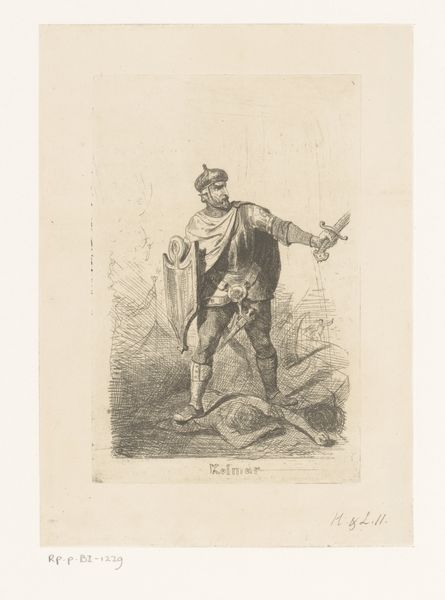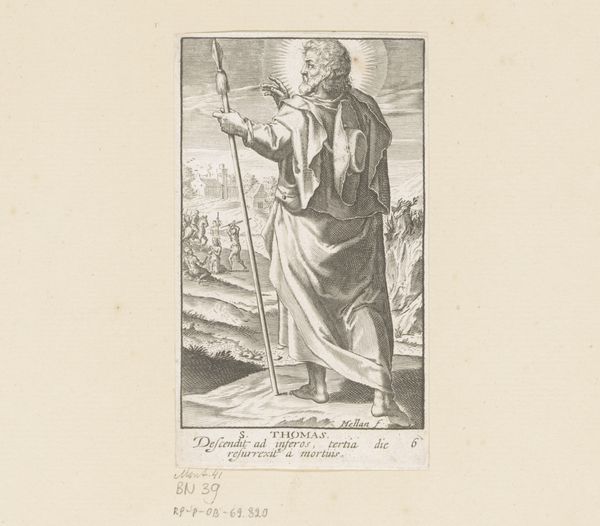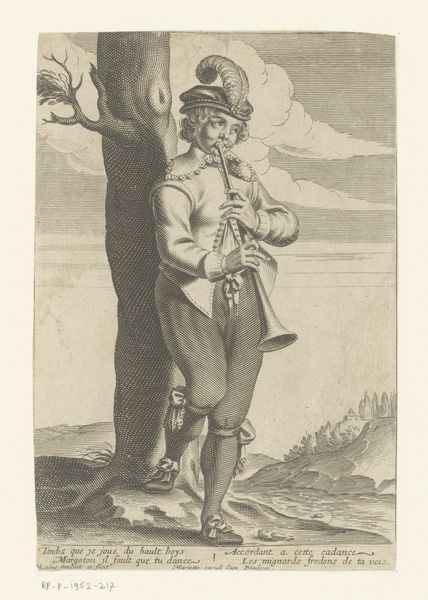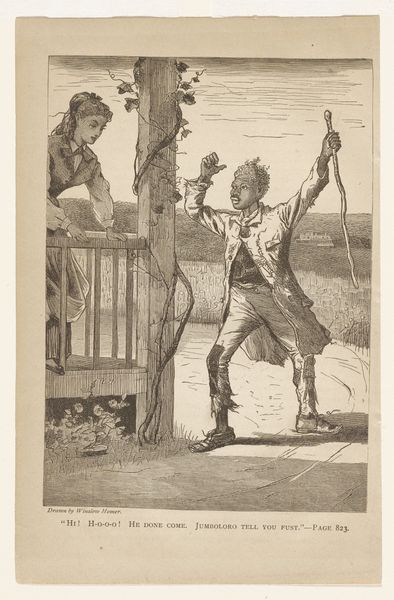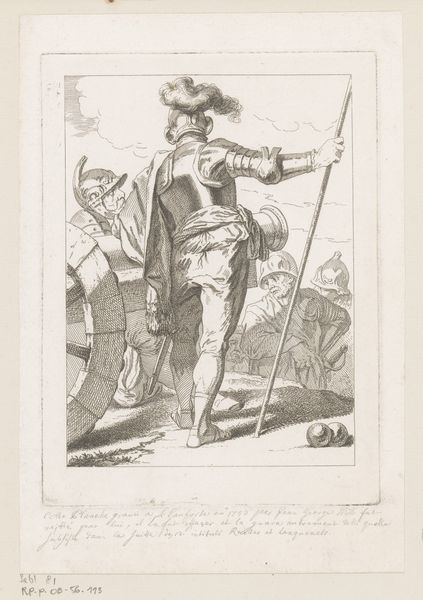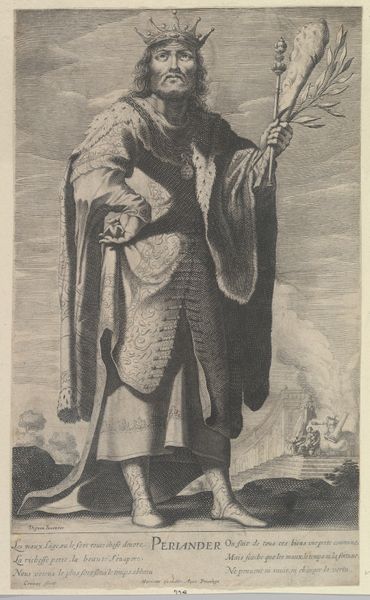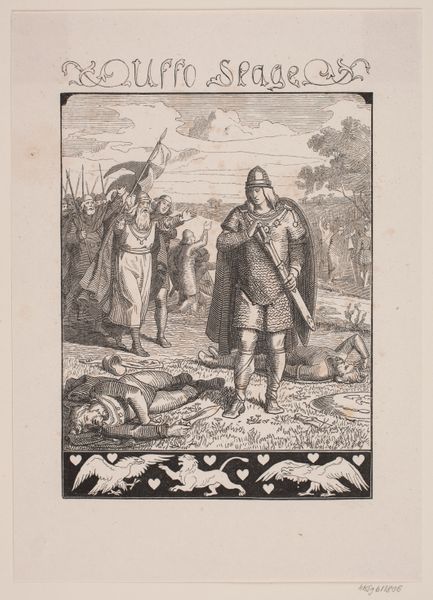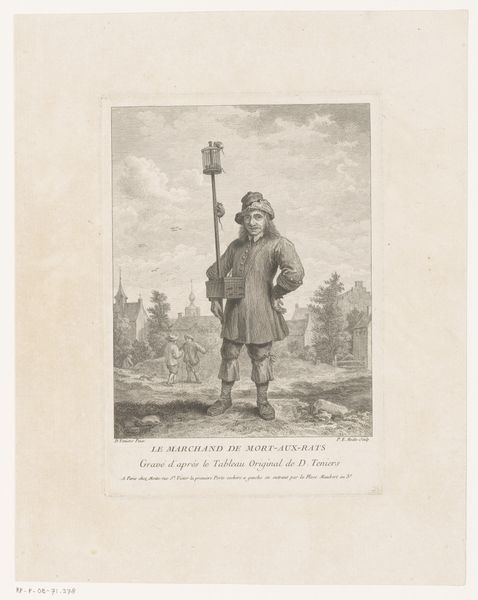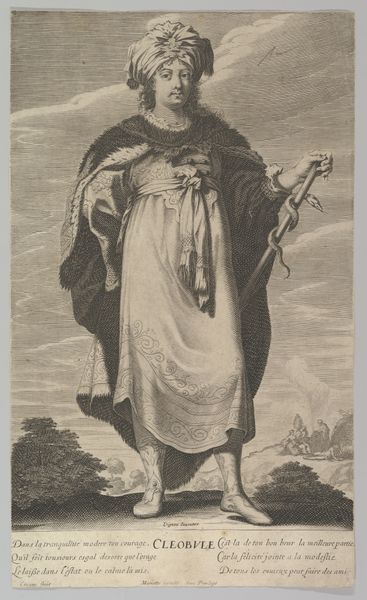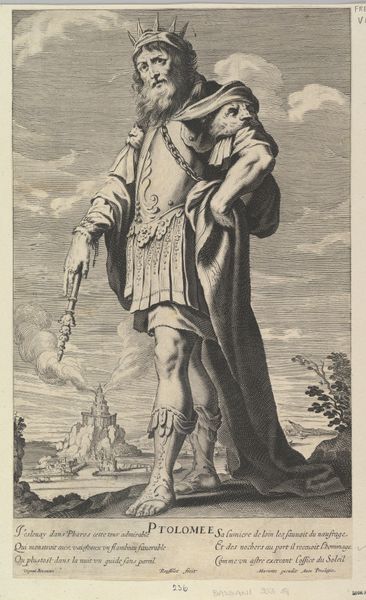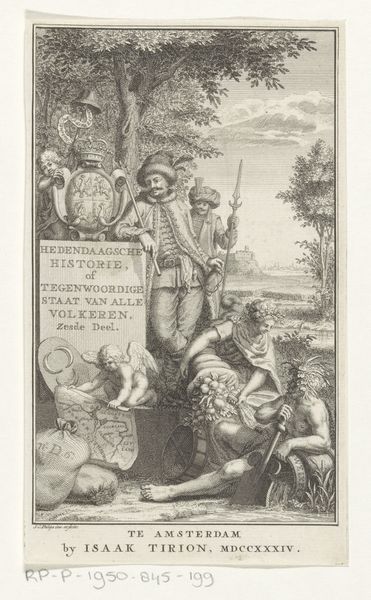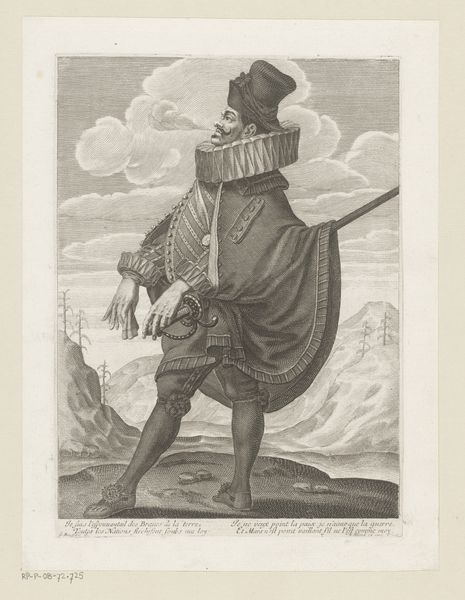
Dimensions: 387 × 246 mm (image); 449 × 269 mm (primary support); 514 × 335 mm (secondary support)
Copyright: Public Domain
Charles Rambert made this lithograph, "The Duel," in 1831, using a printmaking process that democratized image production. Lithography allowed artists to create multiple originals, bypassing the traditional art market and reaching a broader audience. Here, Rambert used a greasy crayon on a stone to create this dark, rich image. Look closely, and you'll see the texture of the stone coming through. The image is a clash of textures, a visual manifestation of the tensions between classes in 19th-century France. The victor stands over the vanquished, but both are rendered with equal detail, thanks to the lithographic process. It doesn't privilege one character over another, at least in terms of labor. This print democratized not just art production, but also its consumption. It was made to be distributed, reproduced, and consumed by a wider audience. This lithograph isn't just an image; it's a commentary on the changing social landscape, made accessible through the magic of material and making.
Comments
No comments
Be the first to comment and join the conversation on the ultimate creative platform.
